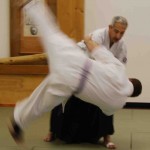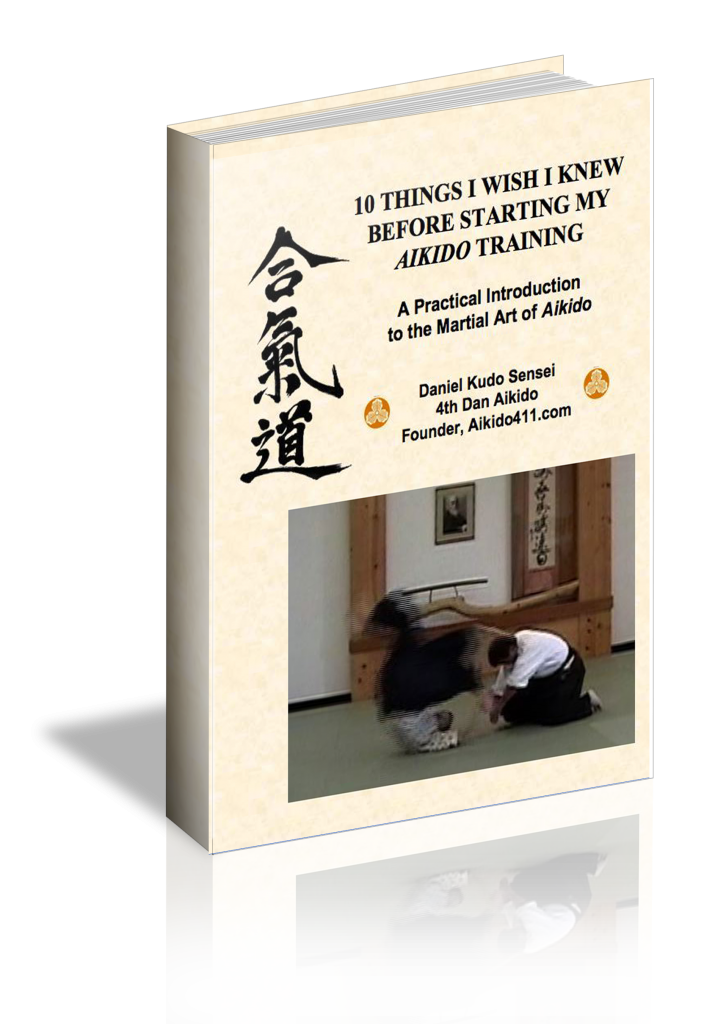Aikido Techniques: Yoko Ukemi – It’s All About Energy Dispersal

Aikido Techniques: Kokyu Nage
In the first article I pointed out that my learning of ukemi (the art of falling) as a young Judo practitioner and how repletion helped me learn how to take falls without fear of injury or discomfort. The Aikido technique of koshi nage (hip throw) places the Aikido practitioner in the same “exposed” position and learning to take yoko ukemi (break falls) properly can give the practitioner the confidence necessary to take the falls without fear of pain or discomfort.
Aikido Techniques: Dispersal of Energy –
Imagine a soldier parachuting into Normandy in WWII. As his feet approach the ground his legs are straight and apart and when he touches down they immediately give way as he rolls backward. The reason that this is done is that energy is not focused in one area – rather, it is dispersed through many areas of the body so that no one area is forced to absorb all the energy of impact.
Aikido Techniques: Ukemi — Taking it to the mat
Let’s take this concept to the dojo. Certainly, we are wearing a gi, not a parachute, and we are being thrown on our back rather than on our feet. Yet, the concept remains the same so how does one land from a hip throw? The answer lies in position of the body and the timing of the landing. A new student might say that there is no control when someone else is hurling you toward the ground. The fact is that you have plenty of ways to move your body even if they have a hold on you. In a properly executed yoko ukemi, you shift your body in-flight to ensure that everything hits simultaneously. Your focus is to land on one side with the body stretched. Your hand slaps the mat at about a forty-five degree angle to your body. This hand slap permits another part of your body to absorb energy simultaneously and the kinetic energy is converted to sound energy. Your chin is tucked in so that your head is protected.
In the next chapters I will review common ukemi mistakes and how to practice this Aikido Technique.

Leave a Reply